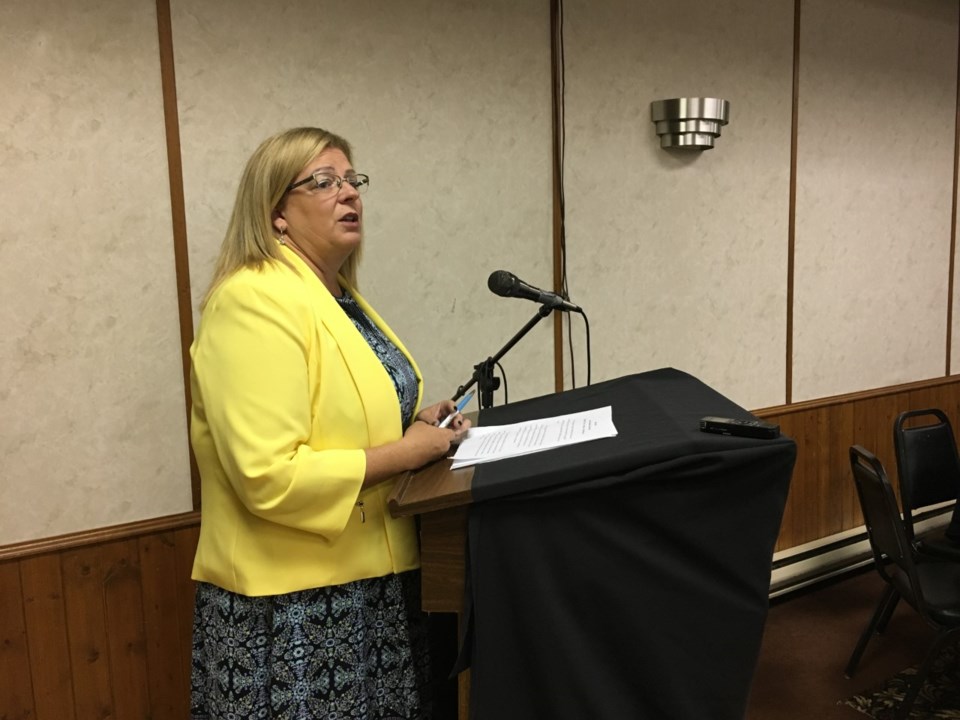Estevan MLA Lori Carr believes there are several items in the province’s new growth strategy that will benefit the Estevan area.
Premier Scott Moe released Saskatchewan’s Growth Plan: the Next Decade of Growth 2020-2030, on Thursday morning. The plan is a roadmap for the economy, communities and families, to build the province.
The new Growth Plan includes 30 goals for 2030, including key targets of a population of 1.4 million people, 100,000 new jobs, a 50 per cent increase in exports and $10 billion in value-added agriculture.
Carr doesn’t believe the 1.4 million populations target is too ambitious, even though it would require Saskatchewan growing by more than 20,000 people per year over the next 10 years.
“We set our target for 2020,” she told the Mercury. “We’re a few thousand people short of that right now. We’ve just about made the target that was set for 2020. As we move forward, and if we truly work on these goals that we’ve set out, whether it be in manufacturing or whether it be in agriculture or whatever the case may be, that’s going need people to actually to do that work.”
The growth plans also calls for increasing oil production by 25 per cent to 600,000 barrels per day by 2030. Carr believes Estevan and the surrounding area would play a big role in that goal.
Using enhanced oil recovery, Carr said Saskatchewan would be positioned as the best place in North America to test, commercialize and scale new oil and gas technologies.
“Given the fact that we currently have carbon capture technology right here in our community through Boundary Dam (Unit) 3, and we’re always looking ways to enhance our oilfield to get more production going, once again it would be a natural fit for this area,” said Carr.
The growth plan also calls for reducing carbon emissions in electricity production and advancing the development of zero-emission small modular reactor technology using Saskatchewan uranium.
“If this type of power production moves forward within the province of Saskatchewan, I truly believe that with the transmission lines and equipment that we already have here existing in Estevan, it would make a natural fit,” said Carr.
The provincial government has reached a memorandum of understanding with another province to seriously look at these modular reactors. If it is to move forward, a site selection would need to occur sooner rather than later, because the process is lengthy, but Carr views it as a viable option for the province.
There is not a commitment to retrofit the Shand Power Station or the Unit 6 at the Boundary Dam Power Station with carbon capture and storage technology. Those decisions will be made several years from now, she said.
Other goals for 2030 include:
- Growing agri-food exports to $20 billion;
- Annual private capital investment of $16 billion;
- Potash sales worth $9 billion annually;
- Tripling the growth of Saskatchewan’s technology sector;
- Building and upgrading 10,000 kilometres of highways;
- Supporting communities through $2.5 billion in revenue sharing; and
- Reducing surgical wait times to a three-month target.
As part of the growth plan, three new international trade and investment offices will be established in Japan, India and Singapore. These offices will help increase exports, attract more investment to the province and strengthen key trading relationships.
The Government of Saskatchewan is also introducing two new SaskFirst new growth tax incentives. An agricultural technology incentive will support the application of emerging digital technologies and will help attract agricultural technology companies to Saskatchewan. A new chemical fertilizer incentive will encourage investment in Saskatchewan’s chemical fertilizer sector.
To help increase mining exploration and the value of mining exports, the province will reinstate provincial sales tax exemptions for exploratory and downhole drilling activity.
The plan also calls for more than $30 billion in infrastructure spending over the next decade. Specifically, the province will expand transportation infrastructure, invest in cellular and broadband infrastructure and build Saskatchewan’s export infrastructure.




